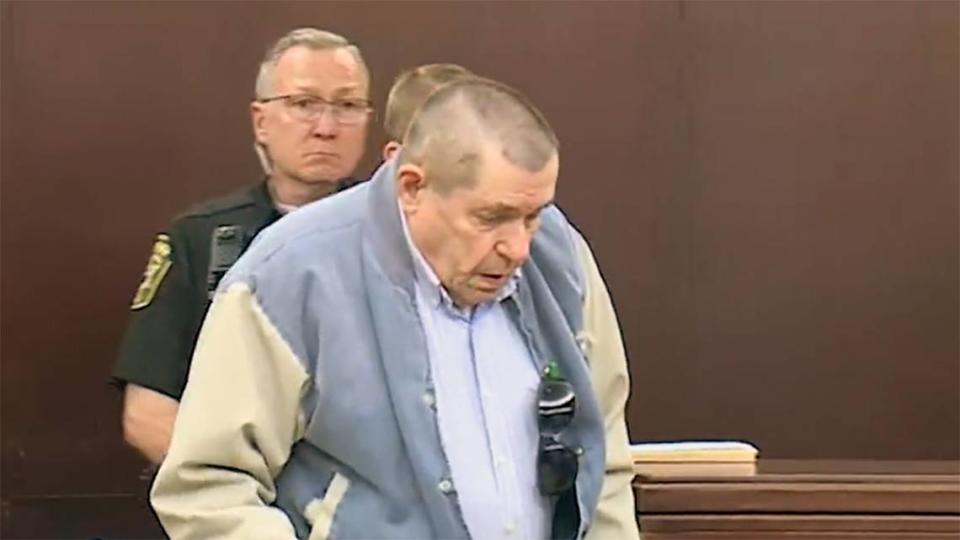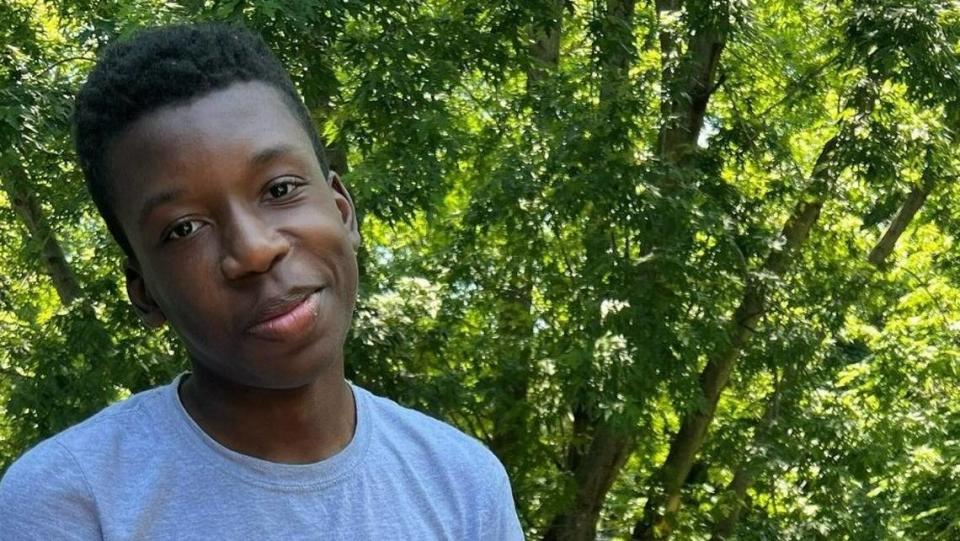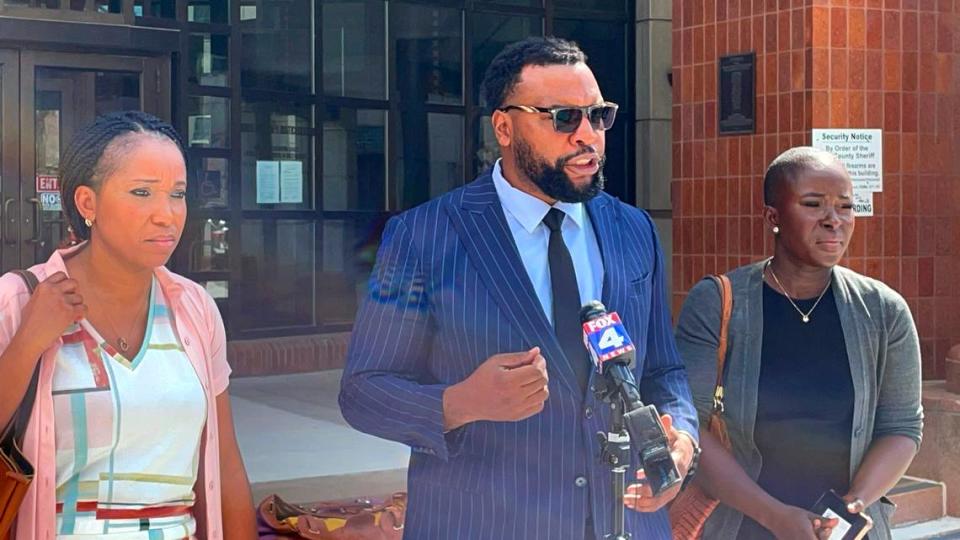Why wasn’t Andrew Lester charged with hate crime? Experts point to gap in Missouri law
In explaining his decision not to file a hate crime charge against the 84-year-old man accused of shooting Ralph Yarl, Clay County Prosecutor Zachary Thompson said Monday he did not want to risk double jeopardy.
The explanation raised questions among observers this week, with some questioning how double jeopardy, the legal principle that a person should not be prosecuted twice for the same crime, would prevent a hate crime charge.
After all, Missouri’s hate crime statute is intended to be added to an underlying crime such as a racially motivated shooting.
Under Missouri law, prosecutors can add hate crime charges to felonies that are knowingly motivated because of the victim’s race, color, religion, national origin, sex, sexual orientation or disability.
Calls for hate crime charges to be filed against the accused shooter Andrew D. Lester rose in the days after the white homeowner shot Yarl, a Black teenager who rang his doorbell by mistake in a Northland neighborhood. Yarl, a 16-year-old, had gone to the house intending to pick up his younger brothers who were actually at a house one street over.
According to charging documents, Lester told Kansas City police that he saw a “tall, Black male” pulling the door handle and concluded he was “attempting to break into the house.”

In Kansas City and across the country, many pointed to the role of racism in the shooting and in the treatment of the case by law enforcement who released Lester within two hours without charges. For his part, Thompson said Monday he thought there was a “racial component” to the shooting.
But in charging Lester with first-degree assault and armed criminal action, Thompson said he did not include a hate crime charge.
“At that point you were talking about double jeopardy issues,” Thompson said at the Monday news conference.
Why not file a hate crime charge?
Alexander K. Higginbotham, a spokesman and an assistant Clay County prosecutor, said in an email to The Star that prosecutors had not filed a hate crime charge because they had already filed the highest possible charge in first-degree assault.
And, he added, first-degree assault is not one of the offenses to which a hate crime can be added under Missouri law, because it is too severe.
“Our office has charged the defendant in this case with an A felony, which is four classes higher than a hate crime enhancement could take a charge,” Higginbotham said.
The assault charge filed against Lester carries a sentence of 10 to 30 years. He also faces between three to 15 years in prison on the armed criminal action charge. Those two prison sentences would run consecutively.
The range of punishment for a hate crime under Missouri law is up to seven years in prison. The defendant could also be sentenced from one day to a year in the county jail.
“Given that we charged the defendant with offenses that are too high a level of felony to include the hate crime enhancement, the only way to have charged the defendant with a hate crime would have been to also file a lower level criminal charge and apply the enhancement to that charge,” Higginbotham said.
“Any lower level criminal charges we could have filed in this case would present a potential double jeopardy issue with the higher level charges that were filed,” he said.
Limits of Missouri hate crime law
Allen Rostron, who teaches constitutional law at the University of Missouri-Kansas City School of Law, said Thompson likely mentioned double jeopardy as a way of indicating why prosecutors can’t use multiple charges to get around the shortcomings of the state’s hate crime law.
“Because when prosecutors pointed out that the hate crime law only gets the defendant up to a Class D or E felony, one response might be to say, well, why don’t you charge him with some additional crimes, in addition to the one that’s a Class A felony,” Roston said.
In addition to the most serious charge, so the argument would go, prosecutors could charge him with some other offenses that are less serious and add the hate crime charge to enhance those. Then if the defendant was convicted for all of them, and if prosecutors added all the penalties for all the charges together, they would wind up with a punishment that is greater than what the Class A felony alone would bring.
“The prosecutor’s office is essentially saying, ‘Sorry, we can’t do that,’” Rostron said. “That would be double jeopardy. We can’t charge someone with multiple crimes for the same offense.”
“It’s that stacking multiple offenses together, as a way to try to get a chance to use the hate crime law, is a double jeopardy problem,” Rostron said.
Federal hate crimes
Earlier this week, dozens of protesters joined civil rights groups and faith leaders across the street from the Charles Evans Whittaker U.S. Courthouse in downtown Kansas City to urge federal authorities to conduct a separate hate crime investigation.
Federal law enforcement often pursues hate crime investigations even when state prosecutors have filed their own charges, as in the case of Ahmaud Arbery in Georgia.
There, two men who killed Arbery were sentenced to life in prison for committing federal hate crimes in 2020, after they had previously been sentenced to life without parole in Georgia state court.
Kansas City defense attorney John Picerno said it is difficult for state prosecutors to seek hate crime charges because they have to prove that the defendant was motivated by race or similar factors.
“I don’t see any evidence at all contained in the probable cause statement whereby one could draw the conclusion that the defendant was motivated by the race of the victim,” he said.
Proving a person’s intent in that situation is often difficult, Rostron said.
“It’s about the mental state of mind of the person who committed the crime,” he said. “You need to show that it was motivated by hostility.”
“It would be difficult unless you get some kind of statement from that person, either before or after the fact.”

Don Ledford, a spokesperson for U.S. Attorney Teresa A. Moore said in a written statement, “The Justice Department is aware the Clay County prosecutor has charged Andrew Lester in the tragic shooting of Ralph Yarl. We will monitor the developments in the local proceedings to determine whether federal action is appropriate.”
‘Don’t come around here’
On the day of the shooting, Yarl was sent to pick up his younger twin brothers at a home in the Northland.
He mistakenly went to a home in the 1100 block of Northeast 115th Street instead of Northeast 115th Terrace
On arriving at what turned out to be Lester’s home, Yarl walked to the front door and rang the doorbell. He waited for a while and then saw a white man answer with a handgun.
Yarl said he remembered being immediately shot after the door opened and falling to the ground. Lester fired a second shot, striking him in the arm.
After being shot, Yarl heard the man say: “Don’t come around here.” Yarl then got up and ran to several houses before getting help, according to authorities.

In the days after the shooting, civil rights attorney Lee Merritt, working with Yarl’s family, pointed out how race figured in Lester’s own alleged explanation of why he shot the teen, whom he described as being “tall” and “Black.”
“Mr. Lester’s entire defense is that I saw this big, imposing scary figure at my door and I fear him because of his size,” Merritt said.
“A 16-year-old kid, 5’8’’, 140 pounds,” he said. “But the truth is and what that really reveals is that underlying racial element that everyone’s talking about.”
“The fact that he (Lester) feared him because his (Ralph) skin was weaponized. He feared Ralph, a boy because he was Black.”

